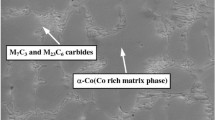Abstract
The polishing process in the mold and die making industries is nowadays still predominantly done manually. As a consequence of this the quality of the mold strongly depends on the worker’s skill, experience and also on his form on the day, patience and concentration. Furthermore, polishing is in most cases the last manufacturing step of the process chain and occurring surface defects are critical and often a “knock-out-criterion”. Until now there exists no systematical acquisition or explanation for the appearance of this polishing defects. This paper shows the results of experiments describing the polishing process and defect mechanisms in order to generate process strategies for manufacturing “defect-free” high-gloss polished tool steel surfaces. Ten different steel grades were analyzed in order to see how the final surface quality is influenced by e.g. the polishing system, the degree of purity or the microstructure. The surface quality is represented by roughness values and SEM-images. It could be concluded that the degree of purity and the homogeneity of the steel material are crucial to the final surface quality. The lower the amount of inclusions, the better the surface quality. Furthermore, a classification of the occurred defects during the polishing process is shown in this paper.












Similar content being viewed by others
References
Altan T et al (1993) Advanced techniques for die and mould manufacturing. Ann CIRP 42/2:707–716
Aghan RL, Samuels LE (1970) Mechanisms of abrasive polishing. Wear 16:293–301
Hambücker S (2001) Technologie der Politur sphärischer Optiken mit Hilfe der Synchrospeed-Kinematik, Dissertation RWTH Aachen, S. 47, 88, 103–105
Horne DF (1972) Optical production technology. Adam Hilger Ltd., Bristol, pp 9–17
Klocke F, Hambücker S, Dambon O (2002) Influence exerted by the pad material and polishing suspension on reproducibility of a polishing process, production engineering. Ann Ger Acad Soc Prod Eng, vol 9, No.2, pp 51–54
Klocke F, Dambon O, Zunke R (2008) Modeling of contact behavior between polishing pad and workpiece surface, production engineering. Ann Ger Acad Soc Prod Eng vol 2, No.1
Denkena B, Lütjens G, Böß V (2003) Feinbearbeitung von Werkzeugen und Formen. Automatisiertes Schleifen und Bandschleifen von Freiformflächen im Praxiseinsatz. Wt Werkstattstechnik online H. 11. www.werkstattstechnik.de/wt/2003/11/03.htm. S 729–734
Dambon O (2005) Das Polieren von Stahl für den Werkzeug- und Formenbau. Dissertation, RWTH Aachen, Shaker Verlag
Preston FW (1927) The theory and design of plate glass polishing machines. J Soc Glass Technol, vol 11
Klocke F, Dambon O, Schneider U (1994) Polieren von Stahl für den präzisen Werkzeugbau, wt Werkstattstechnik online, S.71–75
Dambon O et al (2006) Surface interactions in steel polishing for the precision tool making. Ann CIRP 55/1
Zum Gahr K-H (1987) Microstructure and wear of materials, tribology series 10, Elsevier Science, Amsterdam
Deutsches Institut für Normung (2008) DIN EN ISO 25178: Oberflächenbeschaffenheit: Flächenhaft—Teil 2: Begriffe und Oberflächen-Kenngrößen
Deutsches Institut für Normung (1985) DIN 50602: metallographic examination; microscopic examination of special steels using standard diagrams to assess the content of non-metallic inclusions
Rebeggiani S (2009) Polishability of tool steels—characterisation of high gloss polished tool steels, Licentiate Thesis (No. 45), Chalmers University of Technology, Sweden
Pessoles X, Tournier C (2009) Automatic polishing process of plastic injection molds on a 5-axis milling center. J Mat Process Technol 209:3665–3673
Deutsches Institut für Normung e.V. (1999) DIN EN ISO 8785: Geometrische Produktspezifikationen (GPS)—Oberflächenunvollkommenheiten
Scholz-Reiter B, Lütjen M, Lübke K, Thamer H, Hildebrandt T.(2010) Klassifikation von Oberflächenunvollkommenheiten in der Mikrokaltumformung, ZWF–Zeitschrift für wirtschaftlichen Fabrikbetrieb 1–2, S 42–46
Behrens B, Zunke R (2010) Mehr als Fingerspitzengefühl, Zeitschrift Werkzeug und Formenbau Ausgabe 4, p 52–53
Deutsches Institut für Normung (1982) DIN 4760: Gestaltabweichungen
Klocke F, Brecher C, Zunke R, Tücks R, Zymla C, Driemeyer Wilbert A (2010) Hochglänzende Freiformflächen aus Stahlwerkzeugen, wt Werkstattstechnik online, Jahrgang 10, Heft 6
Brecher C, Wenzel C, Tuecks R (2008) Development of a force controlled polishing tool, Proceedings of the 10th euspen International Conference, Zurich, vol I, pp 438–442
Acknowledgments
The investigations presented in this paper were carried out within the research project SFB/TR4-T3 “Development of Process Strategies for the Manufacturing of Defect Free Surfaces for the Polishing of Tool Steels” funded by the German Research Association, Deutsche Forschungsgemeinschaft (DFG).
Author information
Authors and Affiliations
Corresponding author
Rights and permissions
About this article
Cite this article
Klocke, F., Dambon, O. & Behrens, B. Analysis of defect mechanisms in polishing of tool steels. Prod. Eng. Res. Devel. 5, 475–483 (2011). https://doi.org/10.1007/s11740-011-0301-6
Received:
Accepted:
Published:
Issue Date:
DOI: https://doi.org/10.1007/s11740-011-0301-6



